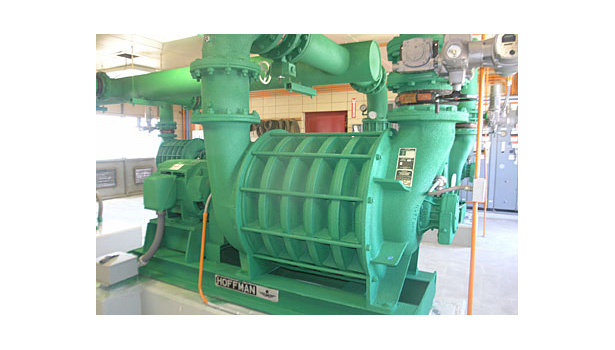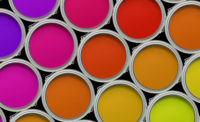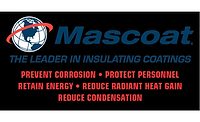Thermal Insulating Coating System Prevents Burn Accidents

Thermal insulation properties of Aerolon Acrylic provide safe-touch performance on hot surfaces to prevent serious worksite accidents.
A thermal insulating coating system with safe-touch performance is helping prevent work-related contact-burn accidents at facilities where hot pipes, blowers and other surfaces are exposed to personnel.
The American Society for Testing & Materials (ASTM) C1055 Standard Guide for Heated System Surface Conditions that Produce Contact Burn Injuries defines the human burn hazard for industrial and consumer products. According to ASTM C1055, a first-degree burn can result from skin coming in contact with temperatures of 137 °F (58 °C) for five seconds; asecond degree burn can occur at 141 °F (60 °C) or higher.
ASTM C1057 recognizes that burn injuries are not only the result of surface temperature and exposure time, but also the amount of energy transferred. Testing has shown that a surface heated to a constant temperature of 350 °F (177 °C) feels much cooler to the touch when coated with Aerolon Acrylic containing aerogel particles.
In a southern California industrial facility, a coating system was needed for a tank used to store crude and chemicals, and for sections of pipe with a surface temperature of 120 °F. “The tank required thermal insulation and the owner wanted the piping to have safe-touch properties,” explained Dustin Kaatz of TPC Consultants, Inc., in Compton, CA.
In Crystal Lake, IL, the Public Works Department needed a coating system that would combat corrosion and assist in protecting employees from the hot temperatures of five large air blowers and connecting pipes in water and wastewater operations buildings. The project required the coating system to be applied while the blowers were in operation.
“The blowers could not be turned off for more than a few hours at a time and would have to be recoated while in service,” according to Erik Otten of Taylor Coating Sales in Brookfield, IL. “The surface temperature of the blowers and piping would be up to 180 °F.”
At both facilities, surfaces were power tool cleaned and primed with Series 1224 Epoxoline WB, a water-based epoxy coating that offers excellent adhesion over marginally prepared steel. “The primer can go onto surfaces with temperatures up to 200 °F,” said Andy Hoffman, Product Manager, Insulation and Specialty Products for Tnemec.
The primer was followed with a spray-applied coat of Series 971 Aerolon Acrylic, a high-build thermal insulating coating that features aerogel particles, which are silica-based materials with thermal insulation properties. “Aerolon Acrylic meets safety standards for heated system surface conditions by providing a five-second safe-touch barrier of protection at elevated temperatures,” Hoffman noted. “Aerolon offers a viable personnel protection solution for facility and safety managers.”
Once mixed, Aerolon Acrylic resembles a slurry, which can be applied with user-friendly spray equipment. The formulation of Aerolon Acrylic has been optimized for safe-touch performance, as well as corrosion resistance, condensation control, and improved thermal efficiencies that result in energy savings.
“Aerolon Acrylic achieves a higher single-coat film build, resulting in shorter application times for a quicker return-to-service and lower labor costs,” Hoffman observed. “Other insulative coatings require three or four coats to achieve the same thickness.”
Both projects were completed with a finish coat of Series 1028T Enduratone, a water-based High Dispersion Pure (HDP) acrylic polymer, which was spray-applied at 2.0-3.0 mils DFT. The low-VOC coating provides excellent long-term protection, and exhibits very good gloss and color stability.
Unlike foam, blankets or mineral wool where moisture can be trapped between layers causing damaging corrosion, the Aerolon Acrylic coating system creates a tightly bonded seal that protects substrates and resists corrosion under insulation (CUI).
“Traditional insulation systems have issues with respect to condensation forming on the surface of a substrate,” Hoffman noted. “These systems will absorb moisture from exposure to water from failed jacketing, or when water vapor comes into contact with colder surfaces, resulting in CUI.”
Hoffman cited the example of a water treatment plant in Nashville, TN, where severe corrosion was discovered on a section of steam pipe after traditional insulation was removed following a flood. The steam pipe was coated with Aerolon Acrylic to provide a safe-touch surface for employees who might accidently come in contact with its hot surface.
“Based on its safe-touch performance, the Aerolon Acrylic coating system has been considered for future projects with the municipality,” Hoffman shared.
A single coat of Aerolon Acrylic can achieve up to 50 mils dry film thickness (DFT), compared to 20 to 25 mils DFT for ceramic and glass-infused insulation coatings. “In terms of insulation value, Aerolon Acrylic is dramatically more efficient than other thermal coatings containing ceramic beads and are comparable to most conventional forms of industrial insulation,” Hoffman added.
Looking for a reprint of this article?
From high-res PDFs to custom plaques, order your copy today!





